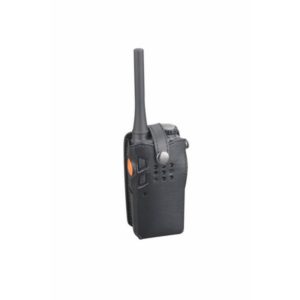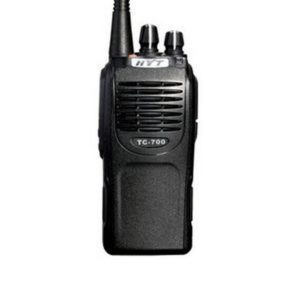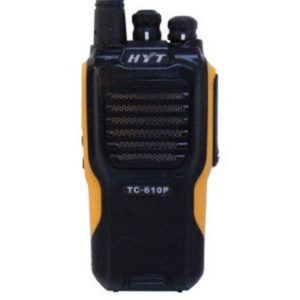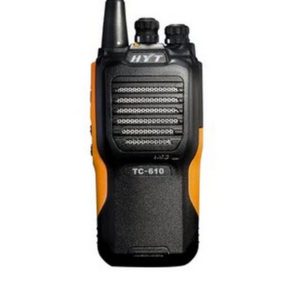Description
The RD982 is an open-standard DMR repeater capable of being connected via the internet to multiple sites as well as integrated with Hytera SmartDispatch or other 3rd party GPS dispatching software. The RD982S is capable of being upgraded to trunking at a future date as capacity requirements increase. The analog version of the RD982 provides organizations with an easy migration path to digital technology.
Dual Mode: Analog & Digital
Dual Mode Analog and Digital channel auto switching, allowing efficient frequency sharing between Analog and Digital users and ensures a smooth transition to Digital technology.
50W High Power
Maximum repeating power of 50W, and thus increasing the system coverage with lesser setup equipment.
16 Channels
A maximum of 16 channels, allowing efficient radio network control at different scenarios. The channel change can be performed either via RDAC PC tools, via the repeater’s front panel channel knob and via the channel steering from the repeater’s rear port.
Heat Dissipation
The unique cooling design combining a built-in heat pipe and a temperature-controlled fan ensures quick heat dissipation, enabling the repeater to operate efficiently even with full power.
Management Software
With the management software, you can remotely monitor and diagnose a repeater. In addition, you can either record or play back the audio freely in digital mode.
Innovative LED Design
The innovative LED and the 2.0″ HD color display would deliver the repeater status clearly.
Expansion Ports
This allows third parties to develop accessory and applications via front and rear port of the repeater. This is achieved via the signal streaming and pin control through the repeater ports.
Dual Slot Digital Auto Steaming
Streaming of both the voice slots via the rear port accessory pins, allowing third party for capability expansion.
Continuous Wave Identification (CWID)
Continuous Wave Identification Analog transmission of the repeater identification in Morse code format.
Analog Scan
Analog Scan Analog voice and signaling scan, allowing coverage of different analog voice users from various groups.
Multiple Sites Via IP
Network connection via the IP port of the repeater to form a private radio network to meet data and voice communication needs for wide-area coverage and dispersed locations.
Advanced TDMA Technology
The application of Time Division Multiple Access (TDMA) technology greatly enhances spectrum efficiency, which allows twice the users compared with that of traditional FDMA. Obviously, this can not only save infrastructure cost and frequency licenses, but also relieve the pressure of increasing shortage in spectrum resources.
Repeater Diagnostic And Control (RDAC)
Remote IP connection to monitor, diagnose, and control the repeater thus increasing maintenance efficiency. The Hytera developed RDAC is able to support multiple master network connections to allow the radio administrator to monitor multiple radio networks.
Interoperability
Two repeaters can be interconnected to provide interoperability between UHF and VHF. A single repeater can auto switch between Analog and Digital mode, allowing for efficient frequency sharing between Analog and Digital users and an easy digital migration.
Multi CTCSS/CDCSS Decode
Decoding up to a maximum of 16 CDCSS/CTCSS codes in Analog channels allowing coverage for different Analog voice users from various groups.
Repeater Access Management
The repeater access control feature ensures a more secure network by preventing unauthorized users from accessing the radio network.
Analog/Digital Telephone Interconnect (via DTMF signaling)
Simplex voice communications between radio and telephone users. It allows a radio user to make a telephone call; or a telephone user to make either a Group or Private call to radio users. This feature utilizes the Commercial Off The Shelf (COTS) Analog Phone Patch boxes and a Plain Old Telephone Service (POTS) line to connect the Repeater to the Corporate Office Phone System (PBX) or Public Switched Telephone Network (PSTN).
Analog Repeater Knockdown
Repeater knockdown, that when activated via the repeater’s rear accessory pin, will disabled the transmit path of the repeater.





